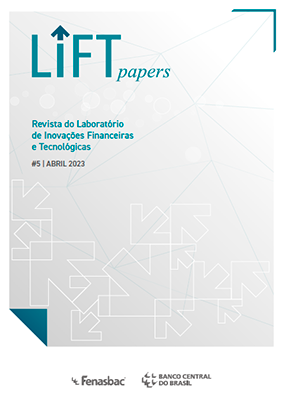Brazil’s Central Bank Digital Currency: Improving Financial Infrastructure with Programmability
##plugins.themes.bootstrap3.article.main##
Resumo
This paper explores the benefits of incorporating technological
innovations in ledgers, digital transfers, programmability, and encryption
in resolving key financial markets’ inefficiencies, such as asymmetric
information, limited commitment, and transaction costs. Central banks
can deploy these tools in adopting a fully programmable Central Bank
Digital Currency (CBDC), as Brazil’s Digital Real exemplifies. This CBDC
serves as a public infrastructure for exchange and contract execution,
enabling the creation of new applications, such as those developed in
the LIFT Challenge. Example use cases highlight the potential of CBDC
technology: VERT shows how CBDC can improve existing subsidized
credit policies, VISA shows how decentralized finance tools can match
small and medium enterprise borrowers with foreign investors, and
Santander demonstrates how to improve real assets ownership
transfers. Finally, we consider the design challenges of CBDCs and their
potential use to enhance fiscal and monetary policy.
innovations in ledgers, digital transfers, programmability, and encryption
in resolving key financial markets’ inefficiencies, such as asymmetric
information, limited commitment, and transaction costs. Central banks
can deploy these tools in adopting a fully programmable Central Bank
Digital Currency (CBDC), as Brazil’s Digital Real exemplifies. This CBDC
serves as a public infrastructure for exchange and contract execution,
enabling the creation of new applications, such as those developed in
the LIFT Challenge. Example use cases highlight the potential of CBDC
technology: VERT shows how CBDC can improve existing subsidized
credit policies, VISA shows how decentralized finance tools can match
small and medium enterprise borrowers with foreign investors, and
Santander demonstrates how to improve real assets ownership
transfers. Finally, we consider the design challenges of CBDCs and their
potential use to enhance fiscal and monetary policy.
##plugins.themes.bootstrap3.article.details##
Seção
Artigos

